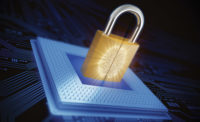“If you have a system that’s fully integrated, you will get many more features and the ease of use is astronomical,†says Ron Waxman, chief operating officer for Frisco Bay Industries Ltd., Montreal. “Integration,†he adds, means more than just “interfacing.â€
To illustrate, he describes how an alarm condition is handled by a fully integrated access, alarm and video surveillance system. From a single computer screen, security personnel would see the word “alarm†pop up, they would click on that word, and video images at the site of the alarm would appear on the same screen.
Without full integration, security personnel might get an indication on the screen that there was an alarm in a certain area. But then they would have to go into a separate software program controlling the video surveillance system and select the appropriate camera before being able to view an image from that camera. “You can get the same result, but not as quickly or easily,†says Waxman.
A fully integrated system also may enable a business or government customer to avoid the cost of a uniformed guard for high-security areas, says Angelo George, chairman of the board of directors for Engineered Security Systems, Towaco, N.J. He cites the example of “SCIF rooms†(for “secured and compartmentalized information facilityâ€) in some government installations. “With access control and video surveillance and alarm system integration, that ties it up totally and completely,†says George.
Here are some other examples of the powerful capabilities of an access control-based integrated security system:
• The photo of a badge-holder can be easily compared with a video image of the person using that badge to verify whether he or she is really the badge holder.
• If a badge-holder does not have the authority to disarm a secured area, he or she can be prevented from entering that area, thereby reducing false alarms.
• A company may want the access control system to automatically unlock the doors every morning at opening time, but only after someone has disarmed the alarm – an important feature when personnel are delayed due to poor weather conditions, for example. Integrating the two systems can accomplish this.
• If a badge-holder opens a door and then does not close it within a specified time, a video image of that area can be displayed on the monitoring screen. That can enable security personnel to determine whether there is an emergency – or whether someone just propped the door open to move something in or out.
• A company with multiple locations can leverage the ability of the access control system to generate a single master report for all of the locations, extending that same capability to generate a single master alarm activity report.
The Software Advantage
The software program controlling the access control system provides the brains behind the fully integrated security system. Systems integrators use this software to configure the overall system, and the customer’s employees use it to monitor and administer the system. Access control system manufacturers sell software packages designed for use with specific alarm and video surveillance systems. Companies that manufacture all three types of systems usually offer software to work with their own products, as well as those of key competitive offerings.Today much of this software is of the client/server variety, meaning that server software is installed on a central workstation. Management or human resources personnel who should have access to the security system must have client software installed on their workstations, and that software can limit an individual’s ability to control various system functions. For example, only certain individuals would have the ability to add new employees to the system. As an alternative to a client/server approach, some manufacturers offer software that supports a browser interface, enabling authorized personnel to access the system from any Web browser.
The integrated security system typically leverages local area and wide area computer networks to interconnect the access control and video surveillance systems – and may also use the LAN or WAN to interconnect the alarm system. The access control panel and the DVR controlling the video surveillance system connect to a company’s LAN through an RJ-45 connection, just as individual workstations do.
Some alarm panels also have the ability to connect to a network via an RJ-45 connection. Alternatively, the alarm panel may be connected to the access control panel via an RS-232 or other serial connection – or alarm system components may be hardwired directly into the access control panel. (The pros and cons of these different options will be examined in the May issue of SDM in the last of this three-article series on security system integration.)
Playing Nice
Working closely with a company’s information technology department from the earliest stages of planning an integrated security system is critical. IT personnel may want to control parts of the installation involving the corporate computer network, and systems integrators will need to work closely with them to make sure that the router can see the server and is correctly configured.If IT personnel are particularly risk-averse, they may want the security system to run on a separate network. In that case, systems integrators may need to build their own network by installing their own router. Often they can add their own wall jacks to existing unused or “dark†fiber that typically would have been installed inside the walls at the same time as the computer network.
If congestion is the IT department’s main concern, IT staff may allow the security system to use the corporate network, but may configure the network to limit the amount of bandwidth that the security system can use. Such limits may prevent the system from supporting streaming video from the surveillance system. In that case, the systems integrator will want to configure the system so that, if there is an alarm condition or unauthorized access, the DVR will then send a video clip recorded just prior to the event to the server.
Access control systems in branch office or other remote locations can be connected to the central system over the same wide area connection (T1, DSL, etc.) as the corporate computer network. Programming of the remote systems can be handled at the headquarters location or at the branch office. When programming is done at the branch office, it can be handled either through client software or the systems integrator can install a replicating server at the branch office that runs independently. In a multi-server installation, the remote server updates the central server at regular intervals, which are configured in the software (usually at least once a day). An advantage of using a replicating server is that it prevents the central server from becoming a single point of failure.
Beyond Security
An integrated access control, alarm and video surveillance system may interface with other systems, as well. Integrating the access control system with the human resources database, for example, can eliminate the need to make duplicate entries in the two systems and ensure that both systems contain identical information. Here, too, early involvement of customer personnel responsible for the human resources database – or other systems that will be integrated – is critical.
One approach to integrating disparate systems is to use OPC (for “OLE for process controlâ€), an open standard spearheaded by Microsoft. Access control manufacturers are beginning to support this standard, with the goal of simplifying the task of integrating access control with fire, heating/ventilation/air-conditioning (HVAC) and other systems, as well as video and alarm systems.
Sidebar
7 Tips for Successfully Integrating Access Control with Video and Alarms
• Involve all stakeholders within the customer’s organization as early as possible. At a minimum, the information technology department should be involved to determine any limitations that will be put on the integrated system’s use of the corporate computer network.• Plan for future expansion from the start. Some customers may start with just an alarm system, while others may start with only access control. If they think they’ll later want to add on, make sure to choose alarm or access control systems for which integrated software is available.
• Consider saving costs by using an alarm system with built-in access control. But realize that this may not be a viable option for really large installations.
• Avoid creating single points of failure when designing a system. For example, you may want to include a replicating server at a remote location – and you may want to avoid wiring alarm sensors directly into the access control panel.
• Consider using an access control, video surveillance, and alarm system from a single manufacturer. The advantage of this approach is having the proverbial “single neck to choke†in the event of an equipment problem. On the positive side, these systems were designed by the same vendor to facilitate smooth programming and operation.
• RJ-45 connectors can be easily unplugged, so be sure that all such connections to the corporate computer network are in secured locations.
• Disable the customer’s ability to program users from the alarm system keypad to avoid having someone enter information that differs from what is in the access control system.

